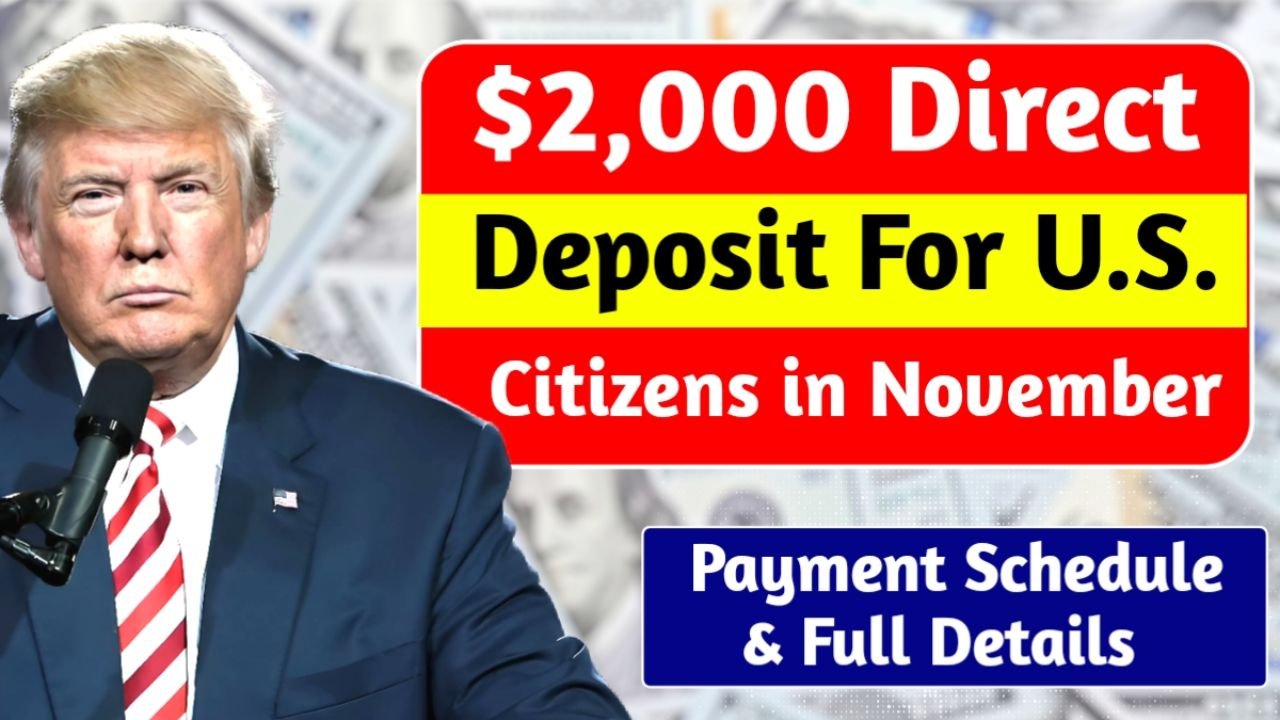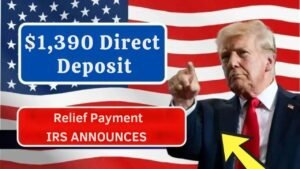The U.S. government is set to issue a $2,000 direct deposit to millions of Americans this November 2025, offering much-needed financial relief amid rising living costs. This one-time federal payment is designed to support families, seniors, veterans, and low-income earners struggling with higher grocery bills, rent, and healthcare expenses. While it functions similarly to previous stimulus initiatives, it is not officially labeled as a “stimulus check” but rather as part of a broader federal relief plan aimed at strengthening household financial stability.
Eligible recipients will receive the payment automatically through the U.S. Treasury, either via direct deposit or paper check, depending on previously filed tax and benefit information.
Understanding the $2,000 Direct Deposit Program
The $2,000 direct deposit program is intended to ease the financial pressure caused by inflation and rising essential costs. Key highlights include:
- One-time payment designed to assist households managing everyday expenses like food, fuel, utilities, and medical bills.
- Automatic transfers through IRS-managed systems for eligible recipients.
- Non-taxable relief, which does not impact Social Security, Medicare, or other federal benefits.
- Targeted support for working families, retirees, veterans, and low-income individuals.
This program functions like past economic relief measures, but is specifically tailored to provide immediate financial assistance during periods of high inflation.
Eligibility Criteria for the $2,000 Payment
Eligibility depends on income, tax filings, and federal program participation:
- Citizenship/Residency: U.S. citizens or legal residents with a valid Social Security Number (SSN) or Taxpayer Identification Number (TIN).
- Income Limits for Full Payment:
- Single filers: up to $75,000/year
- Heads of household: up to $112,500/year
- Married couples filing jointly: up to $150,000/year
- Phase-Out Payments: Individuals earning above these limits may receive a reduced amount.
- Federal Benefits Recipients: Social Security, SSI, SSDI, VA, and RRB beneficiaries automatically qualify without additional action.
- Tax Filing Requirement: Must have filed 2023 or 2024 federal tax returns unless receiving federal benefits.
This approach ensures simple and automatic payment distribution, especially for seniors and individuals on fixed incomes.
Payment Schedule and Distribution Timeline
The IRS has planned a structured rollout for nationwide distribution of the $2,000 relief payment:
- Direct Deposit: November 10–29, 2025.
- Federal Benefit Recipients (SSA, VA, RRB): November 14–21, 2025.
- Paper Checks: Start mailing November 25, with delivery depending on local postal services.
Tips for timely payment:
- Ensure your bank details and mailing address are up to date in IRS records.
- Track your payment using the IRS “Get My Payment” portal.
- Payments will be delivered automatically for most eligible recipients.
How to Track Your $2,000 Direct Deposit
The IRS will provide a dedicated online tool to monitor payment status:
- Shows whether payment is processed.
- Displays method of delivery (direct deposit or paper check).
- Provides estimated arrival dates.
- Highlights any issues, such as outdated banking or mailing information.
Keeping your details current ensures smooth and timely receipt of funds.
FAQs
Q1: Who qualifies for the $2,000 direct deposit?
A1: U.S. citizens or legal residents within the income limits who filed 2023 or 2024 tax returns, or who receive federal benefits.
Q2: How will I receive the payment?
A2: Via direct deposit for most recipients, or paper checks for those without bank details on file.
Q3: Do Social Security or VA recipients need to apply?
A3: No, payments are automatic for beneficiaries of federal programs.
Q4: When will the payments be sent?
A4: Direct deposits start November 10, with paper checks beginning November 25, 2025.
Q5: How can I avoid scams?
A5: Only check the IRS website for updates; the IRS will never request personal info via phone, email, or text.
Conclusion
The $2,000 direct deposit for November 2025 offers crucial financial relief to millions of Americans facing high living costs. By updating tax filings, bank accounts, and mailing addresses, citizens can receive this one-time payment efficiently and securely. This initiative highlights the government’s commitment to helping households navigate economic challenges and prepare for the holiday season with greater financial stability.





